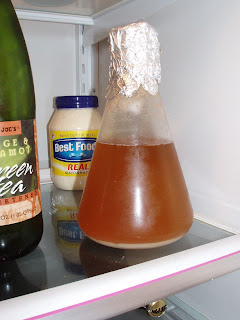I used Mr. Maltys yeast pitching rate calculator to tell me how to do my starter. I am making a 10 gallon batch so it told me to start with 2 yeast packages and there will be 1.01 liters of starter required.
I started off with 1/2 quart of wort boiled and cooled and then added that to my 2000mL flask. I then added both packages of yeast. I have had it on a stir plate now for about 24 hours. It is only measured out to be about 600mL so far. So, do I need to just keep adding cooled wort to it to achieve a volume of 1000mL in order to get the 1.01 liters required?
I started off with 1/2 quart of wort boiled and cooled and then added that to my 2000mL flask. I then added both packages of yeast. I have had it on a stir plate now for about 24 hours. It is only measured out to be about 600mL so far. So, do I need to just keep adding cooled wort to it to achieve a volume of 1000mL in order to get the 1.01 liters required?



